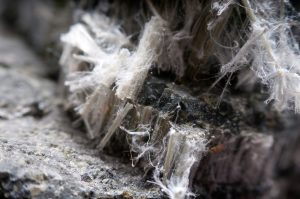Did You Know There Are Different Types of Asbestos? Here’s How to Identify Them
When it comes to the term “asbestos,” many people think it’s just one harmful material. However, asbestos actually refers to a group of naturally occurring fibrous minerals that share similar properties, including fire resistance, strength, and insulation capabilities. While all types of asbestos fibres are harmful, they are not the same. In this blog, we’ll break down the different types of asbestos fibres, where they are commonly found, and how experts like G&L use advanced asbestos testing techniques like polarised light microscopy (PLM) to identify them.
Types of Asbestos
- Chrysotile (White Asbestos): The most used type of asbestos, chrysotile, is primarily found in roofing materials, gaskets, and insulation.
- Amosite (Brown Asbestos): Often used in insulating boards and pipe insulation, amosite appears as straight, needle-like fibres.
- Crocidolite (Blue Asbestos): Known for its fine fibres and high resistance to heat, it was commonly used in steam engines and pipe insulation. It’s considered the most harmful form of asbestos.
- Fibrous Anthophyllite: Found in limited quantities in talc and composite flooring.
- Fibrous Tremolite: Often occurs naturally in vermiculite, a material used in gardening and insulation.
- Fibrous Actinolite: Used rarely due to its coarse nature, it has been found in paints, sealants, and insulation materials.

Where You Might Find Them
- Asbestos Insulation/Coating: Primarily in pipe lagging, limpet, and flock.
- Asbestos Insulating Board: Used in sheets and panels for insulating properties.
- Asbestos Cement: Found in sheets, panels, rainwater systems, and pipes.
- Textured Coatings: Such as Artex, which is often used for decorative ceiling finishes.
- Asbestos Textiles/Paper: Including ropes, cloth, gaskets, washers, and strings.
- Well-bound Material: Such as bitumen roof felts and sink pads.
- Reinforced Composites: Used in vinyl floor tiles, toilet seats, and windowsills.
How Do We Identify Asbestos Types?
Polarised Light Microscopy (PLM)
At G&L, the identification of asbestos fibres is carried out using polarised light microscopy (PLM). This technique examines the optical properties of the fibres to positively identify them as one of the six regulated asbestos types.
Classification of Material
Based on the type of asbestos fibre(s) contained in the sample, its matrix, and the description from the sampler, G&L will classify each sample according to categories like Asbestos Insulation/Coating, Asbestos Cement, etc.
Final Thoughts
Knowledge is power, especially when it comes to something as potentially harmful as asbestos. If you suspect the presence of asbestos in your property, having a comprehensive survey and subsequent analysis by experts like G&L is crucial. Whether you’re in the UK or Ireland, our specialists are trained in identifying and classifying different types of asbestos, so you can take the necessary steps for safe management or removal.




